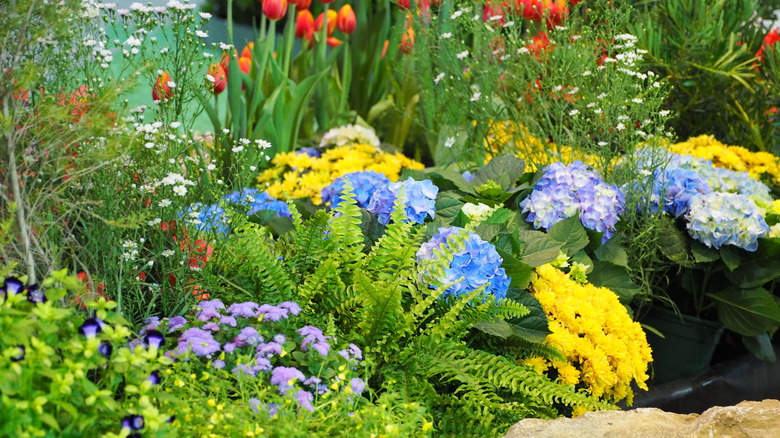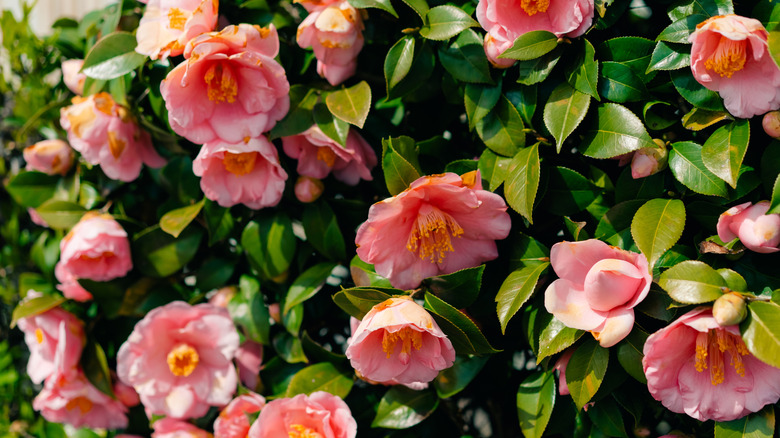Forget Hydrangeas: This Long-Blooming Perennial Brings Color To The Garden All Year
Looking for an alternative to hydrangeas so you can enjoy colorful blooms beyond summer? Hydrangeas bloom from about June to early fall, so try the hardy shrub that explodes with gorgeous blooms later into the fall. Originating in East Asia and grown in the United States for more than 200 years, camellia is a large shrub (3 to 20 feet tall) with vibrant flowers. The three species in the Camellia genus that get the most attention are Camellia japonica, Camellia sasanqua, and Camellia sinensis, the leaves and buds of which are used for tea. An estimated 20,000 camellia varieties grow worldwide, including 2,300 named cultivars.
Camellias have several positive attributes. They attract pollinators and can live as long as 100 years. They come with flowers ranging from white to red and multiple shades of pink, and blooms last three to four weeks. Camellias can be propagated from stem cuttings, and they work well as container plants. They're evergreen, with attractive foliage even when not in bloom. Best of all, a good selection of both fall-blooming and spring-blooming species are cold-hardy in USDA zones 6 to 9, and some even have names denoting their cold-hardiness, such as Camellia 'Polar Ice,' Camellia 'Winter's Charm,' and Camellia Pink Icicle,' enhancing your ability to have year-round colorful blooms.
Substitute hydrangeas for showy camellias
If you decide to substitute these beauties for hydrangeas, you'll want to know how to grow and take care of camellia plants. These instructions focus on the Camellia japonica, which can be planted any time of year. Don't be surprised to discover that camellias are very slow growers and slow to get established before filling your garden with color. Watering is critical to their establishment, and nearby trees may compete with them for water.
Plant them in soil rich in organic matter and well draining. Don't plant them deeply as they have shallow roots; the saying "plant them high and they won't die" has been applied to camellias. Add 2 to 3 inches of mulch to help the camellias retain moisture. Lightly apply fertilizer intended for camellias and azaleas in the spring, following label instructions. Protect plants from high winds and full sun; this flowering shrub is a perennial beauty that will thrive in partial shade. Pest and disease issues include dieback and canker, root rot, camellia flower blight, and tea scale. Camellias are hardy in USDA zones 7a to 9b.
Camellias certainly qualify to be on the list of low-maintenance alternatives to hydrangeas you'll love. By the way, camellias can substitute for other flowering plants with short blooming seasons. For example, if you love peonies but live out of their growing zone, you can try planting this colorful flower.

